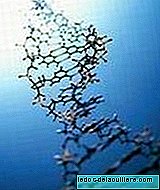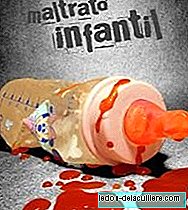
When I was preparing this post a few days ago about the danger of choking on nuts, I discovered a document from the Spanish Association of Pediatrics. It is called 'Foreign bodies in the airways', and its authors are Javier Korta and Olaia Sardón.
They tell us that although the danger of choking from choking due to ingestion by small 'bodies', is more present in children under five years of age; another peak of incidence is observed at 11 years. Also that 29% of non-food foreign body aspiration deaths are caused by balloons. This can also happen with latex gloves, in fact Dr. Juan Alba (pediatrician in Tierra de Fuego / Argentina), says in an article of Pediatric Zone, that as soon as he learned of this risk, he stopped giving away this type of gloves (swollen and turned into a toy) to children.
In the review of the AEPED, we found that choking with non-food foreign bodies, are produced by balls, marbles, etc., and especially balloons. These adhere and take the form of the airways, causing a complete obstruction.
A few years ago a European Union directive entered into force, forcing manufacturers and retailers to set safety warnings on toys that were previously considered harmless. In the matter at hand, the guidance notes to be inserted in the bags are indicated: 'for latex balloons, it should be a warning that children under eight must be supervised and broken balloons discarded'.
As Dr. Alba informs us, accidents with balloons can occur in two ways. Some kids suck deflated balloons placed in the mouth, often with the intention of inflating them. This can occur when the child who is inflating the balloon inhales or inspires deeply to prepare the next expiration, whereby the balloon is displaced back towards the throat.
Some deaths can result when children swallow deflated balloons that they were sucking or chewing. One of the recorded cases is of a boy who chewed a deflated balloon and suddenly fell to the ground. After hitting the floor, the boy in an act reflected sharply inspired, suffocating with the balloon
The second class of accidents involves remnants of balloons. Children can place in their mouth, remains of broken balloons with which they were playing. If the broken balloons are not discarded, any child can continue playing with them, chewing on remnants of it or trying to stretch it inside the mouth or suck it or make “bubbles” with it. These remnants of the balloon are easily sucked into the mouth and lungs. The balloons conform to the walls of the throat and lungs and can completely block breathing.
The Commission on the safety of consumer products (United States) does not believe that a fully inflated balloon poses a risk to young children. However, if the balloon is broken, it is recommended that parents immediately pick up the remains of the broken balloon and discard it out of the reach of small children. In the same way, it is not advisable for a child to blow up a balloon on his own.
When one warns of the potential danger that a seemingly innocuous activity such as swelling balloons with the mouth can suppose, many adults are surprised (or worse, they take it as a joke) claiming that when we were children we all inflated them and nothing happened.
In this regard, I am forced to mention in the first place that during my childhood, the balloons were not as present as today, not even in celebrations, on the other hand for us it was not a fun compared to other more attractive activities (playing outdoors and run adventures).
And finally, I think it is very important that we take it seriously, because a child, even if he is big, can swallow an inorganic objectAt home we have experience with coins, small pieces of rubber eva belonging to a calculation game, and 'almost' with a hairpin. That a half-swollen balloon goes inwards enters as much as possible, and once installed in the trachea (if we have the bad luck of choosing that path), let's see who gets it out of there!












